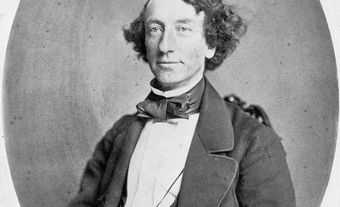
Labour Party
That workers should have political representatives of their own class has been a recurrent theme in Canadian labour history, but no one organization has provided a permanent home for this idea. Many union leaders have preferred to advance their cause through established political parties. Also, acceptance of trade unionists and hybrid candidates by the major parties inhibited the formation of independent labour parties.
Labour candidates and workers' parties emerged during the 1870s and 1880s, often backed by local unions. In 1872 Henry Buckingham Witton, a Hamilton carriage-maker, was elected to the House of Commons as a Conservative candidate, as was Alphonse-Télesphore Lépine, a Montréal leader of the KNIGHTS OF LABOR, in 1888. The first successful independent labour candidate was Daniel J. O'DONOGHUE, an Ottawa printer, elected to the Ontario legislature in 1874.
In the early years of the 20th century the TRADES AND LABOR CONGRESS showed a growing interest in political action, and in 1900 A.W. PUTTEE, a Winnipeg Labour Party founder, and Ralph SMITH of Nanaimo, BC, TLC president, were both elected to Parliament. Puttee is considered the first labour MP because he was elected both in a January by-election as well as the November general election. Alphonse Verville, a Montréal unionist, and TLC president, was elected in 1906. While rejecting the more radical SOCIALIST PARTY OF CANADA, the TLC endorsed the creation of provincial labour parties based on the TLC's platform. Although there were labour candidates from all 9 provinces in the 1921 federal election, only J.S. WOODSWORTH, Winnipeg, and William IRVINE, Calgary, were elected.
Labour candidates had greater success at the provincial level, winning seats in Ontario, BC and Alberta before WWI, Nova Scotia, Manitoba and BC in 1920. Eleven labour members were elected in Ontario in 1919 and participated in the Farmer-Labour government in Ontario (1919-23). In 1920 also, more than 100 mayors and municipal councillors were elected as labour candidates. Attempts to create a cohesive Canadian Labour Party failed, but working-class representation has found a place in the COMMUNIST PARTY, the CO-OPERATIVE COMMONWEALTH FEDERATION and the NEW DEMOCRATIC PARTY. Although the TLC failed to back the CCF in the 1930s, the Canadian Congress of Labour endorsed the CCF in 1943 as the political arm of labour, and the CANADIAN LABOUR CONGRESS later supported the establishment of the NDP. Local labour parties have continued to appear occasionally, especially at the municipal and provincial levels.

 Share on Facebook
Share on Facebook Share on X
Share on X Share by Email
Share by Email Share on Google Classroom
Share on Google Classroom



